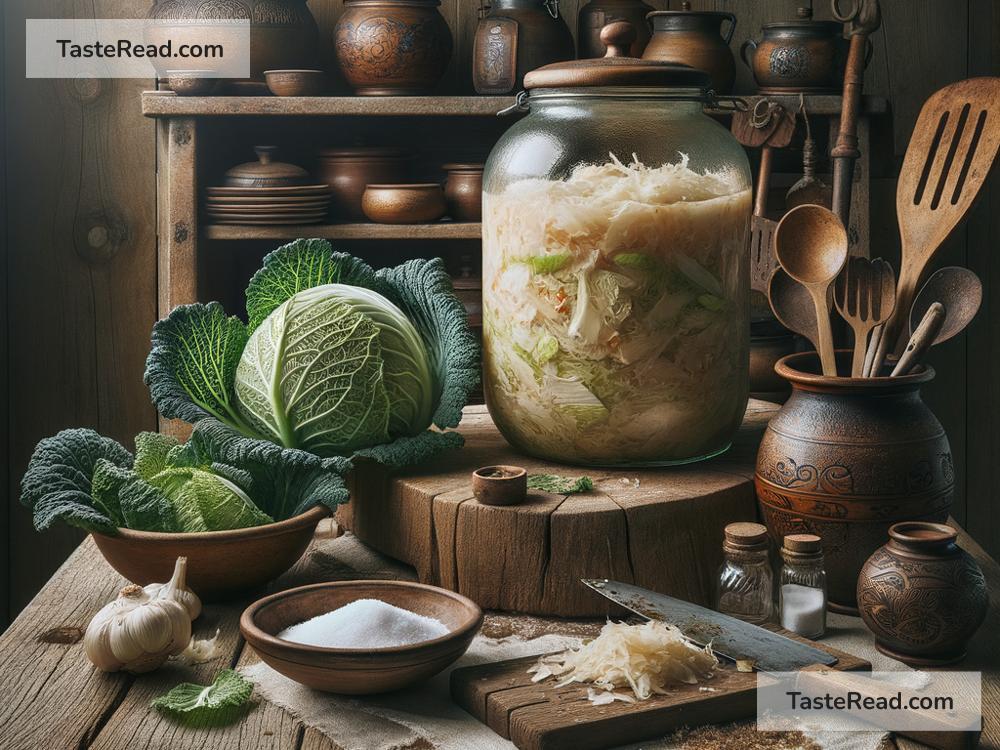The Story of the German Sauerkraut: A Beloved Dish Through History
Sauerkraut is one of the most famous foods in Germany, loved by both locals and people from around the world. But beyond its delicious tangy taste, sauerkraut has a fascinating history that spans centuries. It is simple yet powerful—just shredded cabbage and salt—fermented to become a dish full of flavor and health benefits. Let’s dive into the story of German sauerkraut and discover how this humble food became such an important part of German culture.
The Origins of Sauerkraut
The story of sauerkraut starts far from Germany. Believe it or not, its roots can be traced back over 2,000 years to ancient China. Chinese workers building the Great Wall would ferment cabbage with rice wine to preserve it for long periods. Fermentation was an essential technique before the invention of refrigeration; it allowed people to store food for months, especially during cold winters.
As trade routes opened and ideas exchanged, the art of fermentation spread to other parts of the world. Around the first century AD, the Romans discovered the practice of fermenting cabbage and passed it on to the Germanic tribes. These early Germans adapted the technique using only cabbage and salt, creating the sauerkraut we know today.
A Staple in German Cuisine
Why did sauerkraut become so popular in Germany? First, cabbage is a hardy vegetable that grows well in northern climates, including Germany. It’s cheap, easy to grow, and highly nutritious. Fermenting it into sauerkraut made it even better—it preserved the food for long periods, added a tangy flavor, and boosted its health benefits.
Sauerkraut became a staple in German households, accompanying meals like sausages, pork, and potatoes. It earned a reputation as a “poor man’s food” because it was affordable and easy to make, but its benefits extended far beyond affordability. Farmers loved sauerkraut for its ability to keep them energized during long days of work. Soldiers and sailors during the Middle Ages relied on sauerkraut as a way to prevent scurvy, a disease caused by vitamin C deficiency.
Sauerkraut and the World
Over time, German immigrants carried their love for sauerkraut to other countries. When Germans moved to the United States in large numbers during the 18th and 19th centuries, they brought their food traditions with them. Sauerkraut became a common ingredient in American cooking, especially in regions with a high population of Germans, like Pennsylvania.
It even found its way into American pop culture. For example, during World War I, sauerkraut was temporarily renamed “liberty cabbage” in the U.S. to avoid any association with Germany. Despite its name change, the dish remained a favorite among Americans.
Other cultures also embraced sauerkraut. In Poland, shredded fermented cabbage is turned into dishes like bigos, a hearty stew made with meat. In Korea, fermented cabbage evolved into kimchi, a spicy and flavorful staple. These global variations show the universal appeal of fermented foods.
The Science Behind Sauerkraut
Sauerkraut is much more than a tasty side dish—it’s a nutritional powerhouse. During fermentation, lactic acid bacteria break down the natural sugars in the cabbage, creating probiotics. Probiotics are good bacteria that improve digestion and support a healthy gut. In addition, sauerkraut is rich in vitamins C and K, as well as fiber and antioxidants.
The health benefits of sauerkraut have made it a popular choice in modern diets. More people are interested in gut health today, and fermented foods like sauerkraut are being celebrated again for their ability to improve overall wellness.
Sauerkraut in Today’s Germany
In modern Germany, sauerkraut remains a beloved dish. It is often served alongside bratwurst, schnitzel, or roasted pork. Germans enjoy it both hot and cold, and many families still make their own sauerkraut at home using traditional methods. In grocery stores, you’ll find jars of sauerkraut ready to eat, as well as fresh varieties sold in the chilled sections.
Sauerkraut is also a common sight at festivals. At Oktoberfest, the world-famous celebration of Bavarian culture, sauerkraut is served with plenty of beer and sausages. Regional variations sometimes add other ingredients, such as caraway seeds or apples, to create unique flavors.
A Dish That Unites Traditions
What makes sauerkraut so special is its ability to bring people together. It reflects Germany’s resourcefulness, creativity, and love of hearty food. Even though it started as a simple necessity to preserve food, sauerkraut transformed into a cultural icon that represents German pride.
Today, sauerkraut’s story is a reminder of how food connects people across generations and borders. It shows that sometimes the simplest dishes—made with just cabbage and salt—can carry the richest history and the deepest meanings.
So, the next time you enjoy sauerkraut with a warm meal, take a moment to think about its journey. From ancient China to the tables of Germany and beyond, sauerkraut proves that the best foods often have the simplest ingredients and the longest stories.


